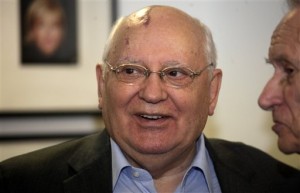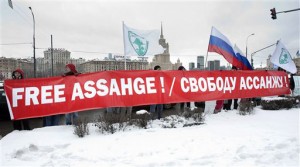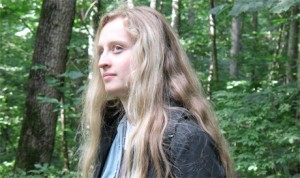Soldiers long ago shot the dogs and cats. Today, the only sound on Lenin Avenue is a chill wind blowing dead leaves. In the summer, thick vegetation obscures six-story apartment blocks, once homes for the city’s 50,000 residents. Once a model Soviet community built for Chernobyl’s nuclear power station, Pripyat now looks like a post apocalypse film set.
Tourists, some wearing face masks, pick their way carefully through dimly lit corridors, boots crunching on broken glass. They walk down debris strewn sidewalks, keeping an eye out for missing manhole covers. Side streets have narrowed into tunnels as bushes and trees have grown unchecked for a quarter century.
Alex, the guide, says visits after dark are forbidden. Packs of wild boars and gray wolves roam the ruins. I roll my eyes with skepticism. Then, I see stretches of dirt freshly torn up by wild pigs rooting for food after a long winter.
Like archeologists exploring the lost city of the Soviets, visitors peer through the underbrush and make out heroic statues and monuments, raised when Chernobyl was designed to be the largest nuclear power station in Europe.
Twenty five years after the nuclear explosion at Chernobyl, Pripyat gives mute testimony to the “downside” of nuclear power.
In the heart of Central Europe, an expanse of land larger than the American state of Rhode Island – about 4,300 square kilometers – is off limits to human habitation.
Old Soviet news reports show Pripyat, model bedroom community for workers at Chernobyl nuclear power plant, designed to be the largest nuclear power complex in Europe:
This was not empty Siberian tundra. To create the Chernobyl Exclusion Zone, authorities forcibly moved 330,000 people from an area that overlaps parts of modern day Ukraine, Belarus and Russia.
Few ever returned. Once a year, families are allowed back to tend ancestral graves, Russian Orthodox and Jewish. Records of human habitation on Chernobyl’s once fertile lands along the Pripyat River stretch back to 1,000 AD. This human history stopped in May 1986.
Given current limits of scientific knowledge, no one can reliably predict when human settlement can safely resume. Work is starting on a new, $2 billion containment “sarcophagus” for the stricken power plant. It is to keep the 200 tons of highly radioactive material sealed – for another century.
The lessons of Chernobyl seem clear to Japan, Russia and the United States.
Time and time again, nuclear safety is sacrificed for cost cutting.
Soviet era footage of the accident at Chernobyl nuclear power plant and the April 1986 evacuation of Pripyat, a modern city of 50,000 people:
For the first part of the 2000s, I lived in Tokyo. I happily enjoyed the cheap electricity provided by Tokyo Electric Power Company’s nuclear reactors up the coast in Fukushima. Reports (some written by me) of safety short cuts, of radiation accidents, of poor maintenance of the aging American-designed reactors never got much traction.
The Christmas Eve 2004 tsunami that devastated the coasts of Indonesia and Thailand should have sent a clear wakeup call about the fragility of structures built on the shores of the Pacific’s “Rim of Fire” earthquake zone. A week after the 2004 tsunami, I picked through the ruins of destroyed beach hotels in Phuket, Thailand. Nearby, Japanese television crews filmed stand up reports for news shows back home.
On another reporting visit, this time to Shimoji Shima, one of Japan’s southernmost islands, I stared at a lovely beach, oddly littered with boulders the size of Toyotas. A local explained: “That was from the Yaeyama tsunami of 1771. It killed 12,000 people.”
With this kind of collective memory among the people who invented the word tsunami, it is strange that critics of nuclear power safety are ostracized as Chicken Littles – nitwits who run around squawking that the sky is falling, the sky is falling.
With Chernobyl looking more and more like a mysteriously abandoned city of the Mayas, it is clear that technology does fail. The radioactive rain does fall.
If Russian, American, and Japanese engineers – arguably among the most scientifically sophisticated on the planet – cannot get nuclear safety right, who can?




![Central_Mosque_Grozny_480[1]](http://blogs.voanews.com/russia-watch/files/2011/03/Central_Mosque_Grozny_4801-300x200.jpg)
![AP_Chechnya_Gronzy_Mosque_07Mar2011_480[1]](http://blogs.voanews.com/russia-watch/files/2011/03/AP_Chechnya_Gronzy_Mosque_07Mar2011_4801-300x200.jpg)










![AP_Britain_Russia_Reporter_Expelled_08May2005_300[1] Luke Harding](http://blogs.voanews.com/russia-watch/files/2011/02/AP_Britain_Russia_Reporter_Expelled_08May2005_3001.jpg)



